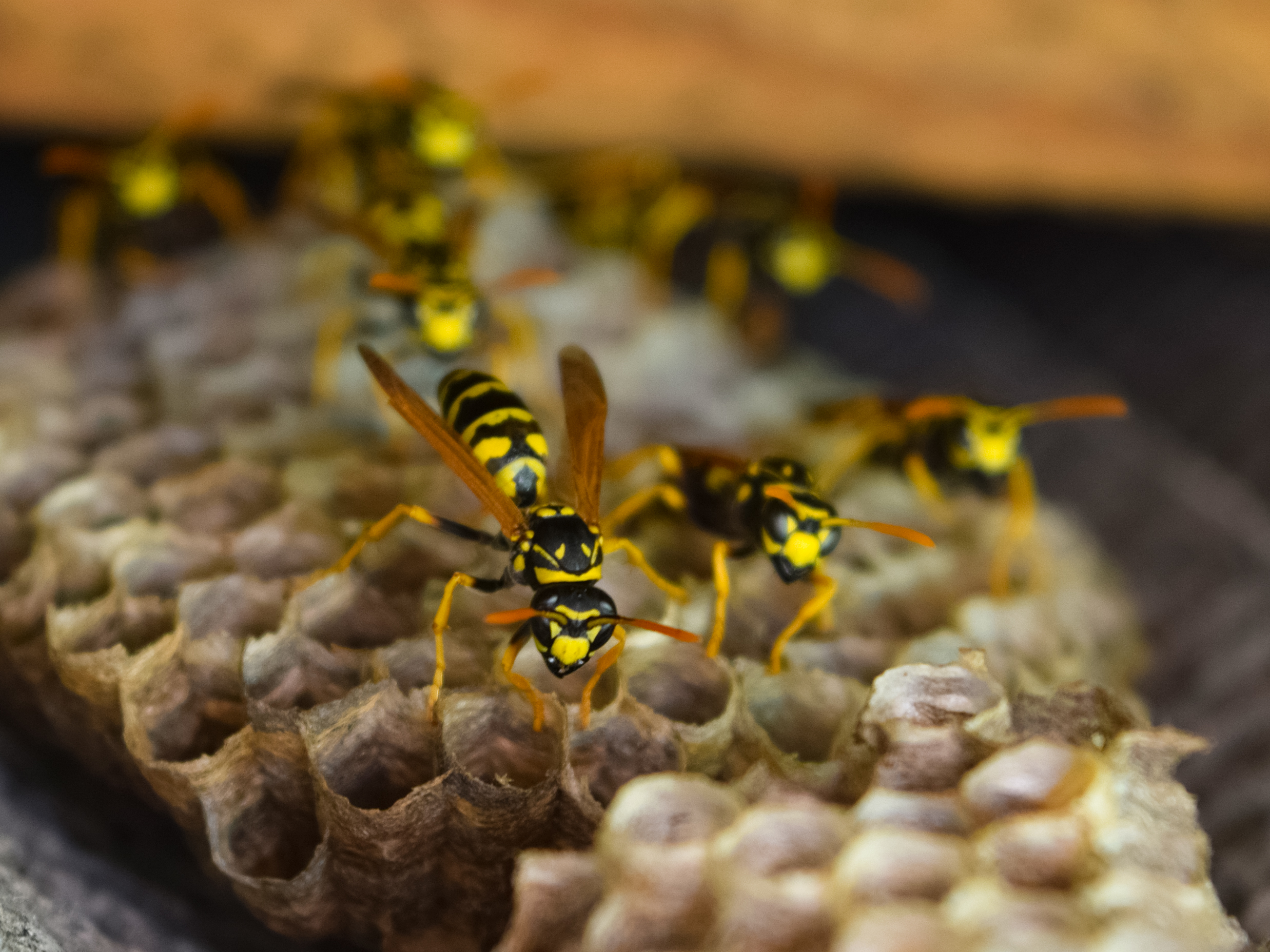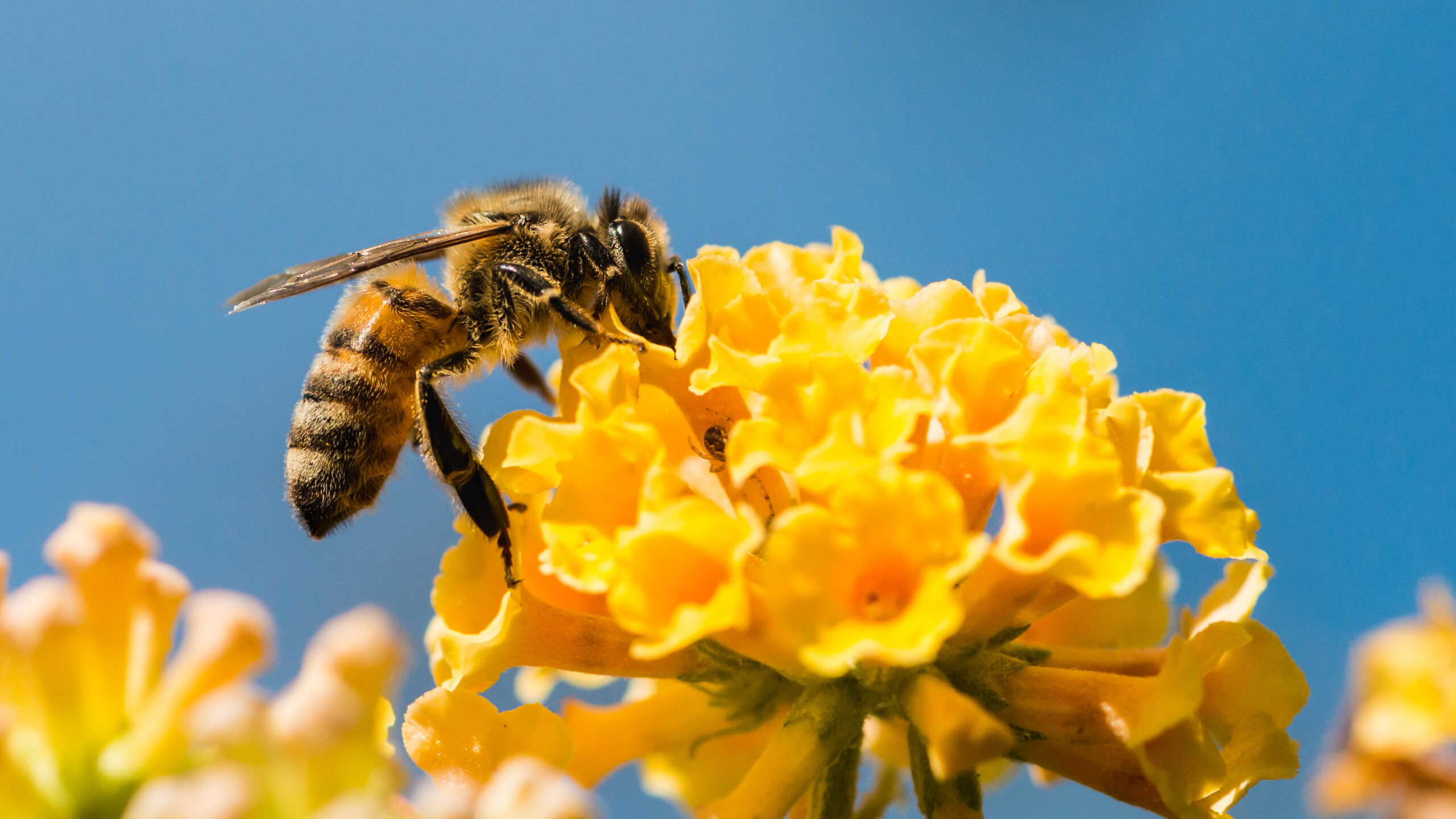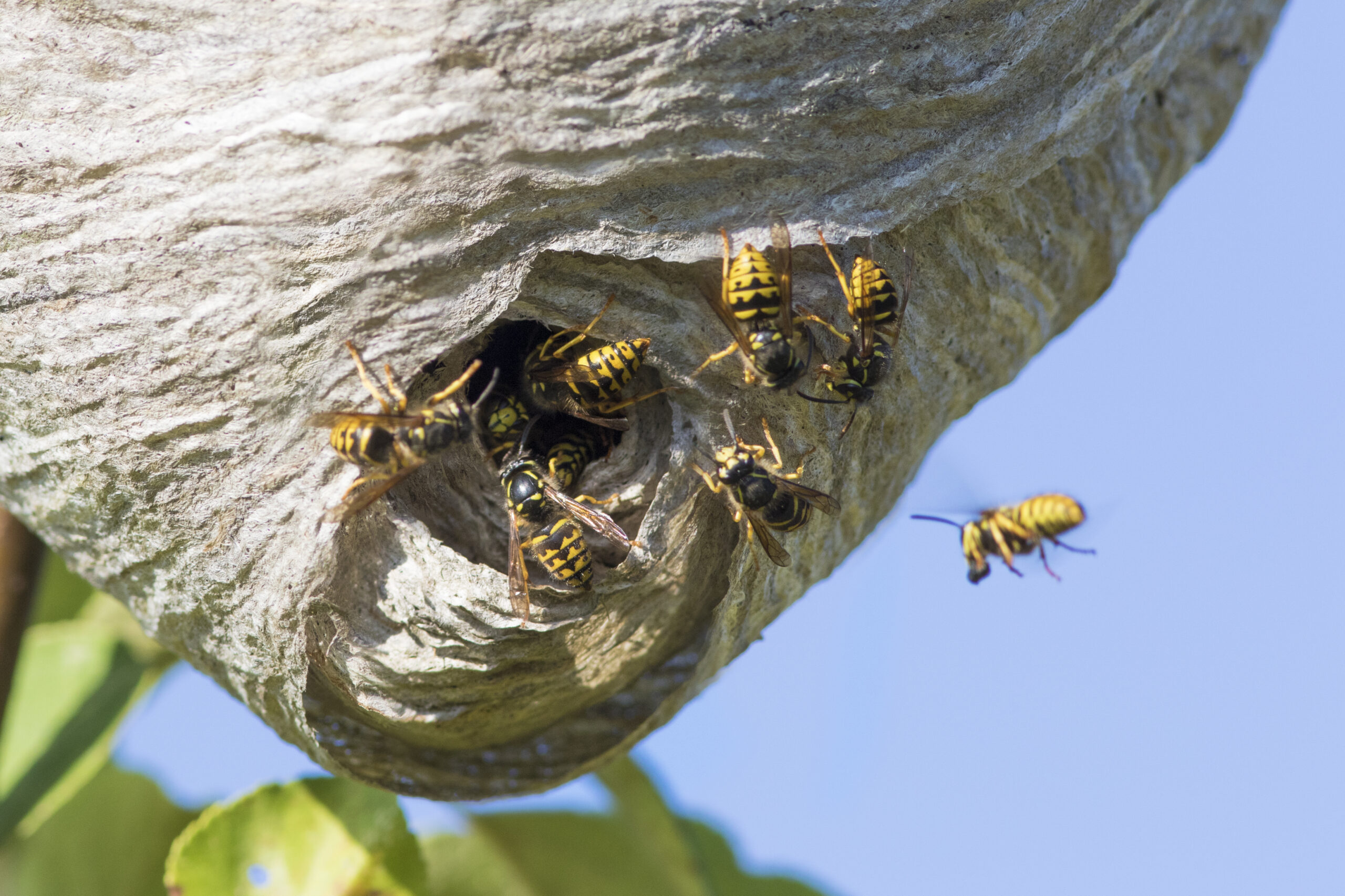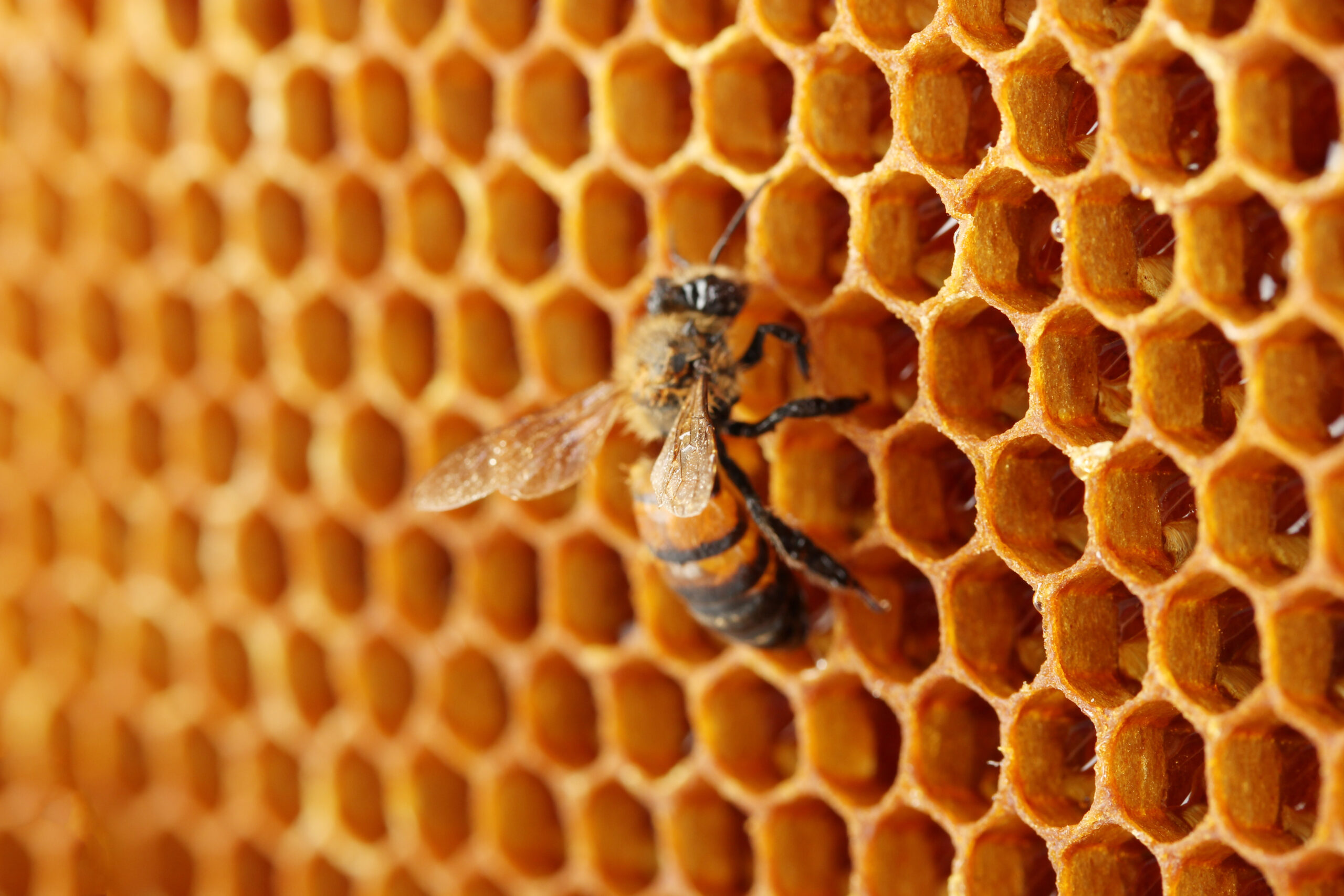Bees vs. Wasps: The Difference Between Stinging Species
Bees vs. Wasps: The Difference Between Stinging Species
This Saturday, May 20, is World Bee Day! When a person sees a black-and-yellow striped insect while outdoors, the natural instinct is often to run or avoid the insect’s immediate area, at the very least. This group of distinct insects can evoke childhood memories of enduring painful stings while playing outside or getting close to some beautiful flowers. There is even more of a risk factor for someone who is allergic to bee stings, and therefore needs to be prepared in the event of an angry bee attack. Since bees and wasps look nearly identical and have the same defense mechanism, are they truly that different? This is the question we aim to answer today as we explore the basic facts of both bees and wasps, as well as some ways that they are quite similar. Let’s bee-gin!
Wild Wasps

The more aggressive of the two, wasps are predatory insects that are anatomically designed for hunting. They have slim bodies with thin legs and smooth skin, and don’t have the fuzz that bees do. Wasps are generally larger and stronger than most bee species, and will defend their home over a much larger distance as well. The general wasp group encompasses multiple infamous species, including hornets, yellow jackets, and paper wasps. These are some of the social species that live in hives with hundreds to thousands of fellow wasps in the colony. Most like to suspend their nests for extra protection, such as up in a tree or the eaves of a house. Others, like yellow jackets, prefer to build their nests underground for the same reason. Wasp nests are a combination of wood pulp and wasp saliva, and the workers will gradually expand the nest as more eggs are laid by the queen. These nests are only used for one season, and the fertilized queen will overwinter somewhere secure before starting a new home in the springtime.
The workers are the wasps that we see buzzing around flowers, the exterior of their nest, and our food and drinks in the summer. They are responsible for the upkeep of the nest, as well as the general wellbeing of the colony and queen. They hunt insects and will paralyze them before bringing the prey back to the nest as a food source. Wasps enjoy many types of insects, but two of their favorites are caterpillars and grasshoppers. They will place the paralyzed insect next to the wasp larvae within the nest so that the young wasp has food readily available while it develops. Wasps are generally drawn to sugar and meat, hence their love for our barbecue parties in the summer, and they especially favor sugar in the fall when they want to retain energy and nutrients in the cooler weather. Since the workers usually live just a few weeks compared to the queen’s lifespan of one year, they need to get as much done as possible before their time is up. Parasitic wasps are a whole different story since they don’t live in nests and instead choose to lay their eggs within the insects they feast upon, just as a fun and horrifying fact for you.
Busy Bees

On the other end of the stinging insect spectrum, bees are notably more docile than their relatives. These insects have round bodies with thick legs and light fuzz that collects pollen as they travel from flower to flower. Interestingly enough, bumblebees and honey bees are the only common social bee species out of the thousands of species native to the U.S., which is why their hives are a popular sight in many regions. These bees like to keep their hives in crevices, like in between tree limbs and tucked in eaves. They prefer to live outdoors, so an influx of bees inside the home means that there is likely a nest within in the walls. The hives are made of wax derived from honey, and the worker bees chew it into cells that will house every life stage of the bees within the colony. As opposed to wasps, bees will use their hives for more than one season if they can help it. Since the workers live for months and the queen lives for several years, they certainly need plenty of room for their massive colonies to live comfortably.
Bees generally eat pollen and nectar, which is why the workers can usually be found hovering around flowers of all kinds. The eusocial bees collect the materials in a special stomach pouch (along with the pollen accumulating on their bodies) until they can get back to the hive and give their findings to the workers that are making honey and loaves for the larvae. Each bee egg is placed in its own cell, along with a nectar loaf that will be its food until it is a fully-formed adult. Solitary bees also care for their eggs, but it is on a much smaller scale since each female simply cares for her own eggs. Bees are non-aggressive when left alone, but the larger colonies can be more aggressive since they have more to lose if their hive is attacked. It’s pretty common knowledge that bees can only sting once and will die afterwards, and this is because their stingers are barbed (wasps’ are smooth) and get stuck in the skin of their target. People who are allergic to bees are technically allergic to the venom that is released from this stinger. For people who aren’t allergic, this venom simply results in painful swelling that should go down after a couple days.
Similar Stinging Pests

When discussing the basics of bees and wasps, there are plenty of differences to be found. In the previous sections alone, the shelters, diets, temperaments, and life spans of the two insects couldn’t be more different. But since they are often mistaken for one another upon first glance, let’s add to that confusion by looking into their similarities. For one, they are both in the order Hymenoptera, which explains their shared qualities. They also have mirroring life stages, by going from egg to larva to pupa to adult. The specific coloring can differ between each species and sub-species, but the most common bees and wasps have black and yellow stripes.
The general habits and social structures are also comparable between bees and wasps. Each insect only has a few eusocial species that live together in large colonies. The larvae of each insect are given food immediately in order to continue growing into energized bees and wasps, respectively. Within these social insects, only the female bees and wasps are workers. The males are drones that only exist to mate with the queen and eat, which explains why they do not live long. Female bees and wasps are also the only ones that can sting, as the males will just buzz around the predator as a scare tactic. The venom in bee and wasp stingers differs slightly since they are distinct species, but the stingers of both insects are equipped with a venom sac that will release venom with each sting. The motivations and number of times that the stinger is used completely differs between species, but both bees and wasps will stop at nothing to defend their home from any kind of threat.
Is One Insect Better Than the Other?

Honestly, the answer to this question is subjective, though it may not seem that way on the surface. Wasps and bees have their own benefits and frustrations, appeals and risks. Both insects are pollinators while they visit flowers, though bees are much more effective at it. Wasps can be considered beneficial through their diet. Since they mainly live off of insects that they hunt or parasitize, there are less garden pests for us to worry about this growing season. But they are territorial and aggressive, and each wasp will deliver multiple stings to anyone who is relatively close to their nest. Bees may not eat insects, but the amount of pollination they do for countless plant species is irreplaceable. However, their hives can be an eyesore if they are in the yard, and can create a sticky mess if the honey overflows. So, it’s up to you to determine which insect is better than the other. If we had to give an answer, we would have to say that bees are better, if only for their docile nature and the fact that many plants would not be as flowery without the useful pollination of busy bees.
Green Takes the Sting Out of Spring!
It’s fun to learn more about common pests and gain insight into their ways of life, but the fun comes to a swift end when the critters set up shop in your home or yard. The experienced technicians of Green Pest Services know the natural habits of pests and use these to inform the customized treatment plan for each client in order to solve each problem as efficiently as possible. However, one note about bees is that we do not treat beehives or eliminate honey bees. Since bees are protected and essential to the ecosystem, we cannot service for many pollinating insects. Bees are generally docile and therefore don’t pose as much of a threat as hornets and wasps, which we definitely service for. Our team is dedicated to solving pest problems with the utmost care, and we guarantee the efficacy of our eco-friendly products against a myriad of pests. Contact us to learn why our pest control services are the bee’s knees!
Citations
Difference between bees and wasps. (n.d.). Orkin. Retrieved March 31, 2023, from https://www.orkin.com/pests/stinging-pests/wasps/difference-between-bees-and-wasps
Hall, H. (2022, October 31). Wasp vs. bee: 7 main differences explained. AZ Animals. Available at https://a-z-animals.com/blog/wasp-vs-bee-7-main-differences-explained/ (Accessed on March 31, 2023).
Smith, A. (2018, November 5). Wasps vs. bees: What’s the difference?. Western Exterminator. Available at https://www.westernexterminator.com/blog/differences-wasps-bees/ (Accessed on March 31, 2023).
Sweetser, R. (2022, July 6). Wasps, bees, and hornets: What’s the difference?. Almanac. Available at https://www.almanac.com/wasps-bees-and-hornets-whats-difference (Accessed on March 31, 2023).
Garden Pests Do Not Hibernate Indoors – How They Attack Houseplants And What To Do
Garden Pests Do Not Hibernate Indoors – How They Attack Houseplants And What To Do Garden Pests Do Not Hibernate Indoors – How They Attack [...]
The Scariest Pests (And Why They Freak Us Out)
The Scariest Pests (And Why They Freak Us Out) The Scariest Pests (And Why They Freak Us Out) Summary: A practical, homeowner-friendly guide [...]
Favorite Foods of Rats and Mice
Favorite Foods of Rats and Mice Favorite Foods of Rats and Mice Summary: Rats and mice are surprisingly picky about what they eat—especially [...]
Where Do Spiders Like to Hide? A Locals’ Guide to Sneaky Spider Spots (and What to Do About Them)
Where Do Spiders Like to Hide? A Locals’ Guide to Sneaky Spider Spots (and What to Do About Them) Where Do Spiders Like to Hide? [...]
Why Do We See So Many Pests in the Fall?
Why Do We See So Many Pests in the Fall? Why Do We See So Many Pests in the Fall? Summary: Fall’s cooler [...]
Why German Cockroaches are Such Problem Pests (And How to Get Rid of Them)
Why German Cockroaches are Such Problem Pests (And How to Get Rid of Them) Why German Cockroaches are Such Problem Pests (And How to Get [...]

